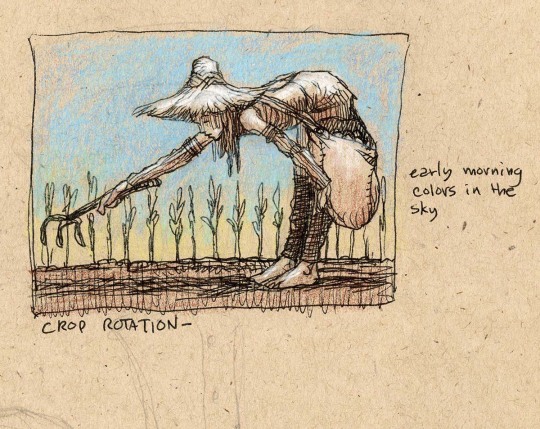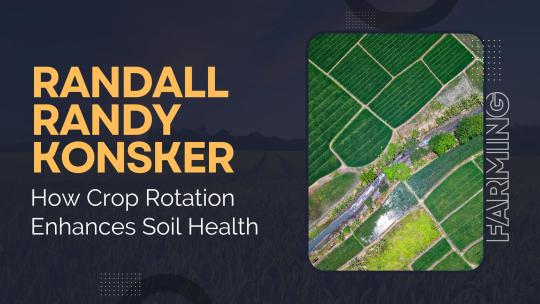#Crop Rotation
Explore tagged Tumblr posts
Text

"Hmm . . . maybe lotuses this year."
-Crop Rotation
21 notes
·
View notes
Text
1,300 Kenyan Farmers Graduate After Four Years of First-of-its-Kind Sustainable Agroforestry and Climate Action Training Program
Discover how over 1,300 farmers in Homa Bay, Kenya, are transforming their livelihoods and restoring the environment through Trees for the Future’s Forest Garden Program, a sustainable agroforestry initiative. Learn how agroforestry techniques like composting, crop rotation, and tree planting are empowering farmers in Kenya to combat climate change, increase food security, and boost…
#agroforestry in Kenya#agroforestry income generation#agroforestry projects#biodiversity conservation#biodiversity enhancement#carbon offset projects#carbon sequestration#climate change Solutions#composting techniques#crop rotation#crop yields#deforestation reversal#entrepreneurial farming#environmental sustainability#farmer training#farmer-to-farmer learning#Food security#Forest Garden Program#green jobs in agriculture.#Homa Bay agroforestry#integrated pest management#reforestation#smallholder farmers#soil carbon improvements#soil restoration#Sustainable agroforestry#sustainable farming practices#tree biomass#tree planting#women in agriculture
8 notes
·
View notes
Text

2 notes
·
View notes
Text

13 notes
·
View notes
Text




Crop Rotation by Tony DiTerlizzi
#Magic the Gathering#MtG#MtGULG#Dominaria#Argoth#Crop Rotation#Fantasy#Art#Tony DiTerlizzi#Wizards of the Coast
14 notes
·
View notes
Text
Where once we were all pretty much farmers, or very close to the land, and we rotated crops, studied yields, used livestock as land fertility aids and worshipped soil gods over lifetimes, not just financial years, now we just ring up the agronomist and order NPK. Where we once all felt, in our hands and backs and stomachs, the health of the soil that nurtured us, now we look at spreadsheets and averages and statistically relevant results. For a while, we lost the gratitude our forebears had for the soil they worked, the land they trod, the wisdom they garnered by growing stuff and watching the earth with more than passing interest, and more of a survival instinct.
"Soil: The incredible story of what keeps the earth, and us, healthy" - Matthew Evans
#book quotes#soil#matthew evans#nonfiction#farmers#farming#crop rotation#crop yields#livestock#soil fertility#deities#lifetime#financial year#agronomist#agronomy#npk#nitrogen#phosphorus#potassium#soil health#spreadsheets#statistics#gratitude#forebears#ancestors#survival
4 notes
·
View notes
Text

A couple of weeks ago, we discussed the different methods of crop irrigation that farmers use and how climate change is affecting the volume of water needed to keep fields hydrated and healthy here in the northeast. Managing water use wisely by installing efficient irrigation systems is just one of many steps that farms can take to reduce their impact on the local ecology while increasing their profitability and productivity. This week, we’ll touch on the importance of protecting and improving soil health to the future of sustainable farming. Building healthy soil and preventing erosion Sustainable agriculture is often used interchangeably with the term ‘regenerative agriculture’ because of the focus on restoring degraded farmland back to its former vitality and biodiversity. Beginning in the early 1900s, traditional farming techniques underwent a rapid transformation as mechanization replaced animal and human labor. As a result of these changes, the use of artificial fertilizers and pesticides was introduced, farms grew larger, yields increased and free-range, pastured animals were confined to smaller areas or moved into feedlots. During his youth in the 1950s, my father worked as a part-time laborer on a small farm in the north of England where he witnessed firsthand many of these changes occurring in real-time. The farm horse named Kit that he had grown fond of and spoiled with carrots and apples was replaced by a Ferguson tractor, while ancient hedgerows filled with blackberry briars and bountiful plum and damson trees were removed to make it easier for the new tractor to plow the land. He recalls forking out chicken and cow manure from the back of the horse-drawn cart to naturally fertilize the fields and hand-harvesting potatoes amongst other “backbreaking work” that is now performed by machines instead of farmhands. While all this modernization has spiked farm efficiency and production, it has often come at the expense of the health of the farmland, livestock and environment. Regenerative agriculture aims to restore the land back to its former fertility by reintroducing many of the traditional farming techniques of my father’s youth. At its core, it centers on promoting and bolstering soil health as fundamental to a farm’s ability to thrive and prosper well into the future by adopting a range of methods including the following:
Crop rotation and diversity: Rather than planting the same crop in the same field year after year, which eventually depletes the soil of certain nutrients and can lead to pest infestations, farmers introduce a different type of crop each year or at multiyear intervals. They can also include intercropping which involves growing a mixture of crops in the same area.
Cover crops and perennials: Cover crops such as clover, rye, buckwheat, mustard and vetch are planted in fields during the off-season when the ground might otherwise be left bare. This helps protect and build soil health by replenishing nutrients and preventing erosion from extreme weather events that are becoming more frequent due to climate change. Perennial crops such as alfalfa and asparagus keep soil covered, suppress weed growth and maintain living roots in the ground year-round which hold soil in place and helps stabilize the areas in which they are planted.
No or limited use of chemicals: Crop rotation and planting cover crops will naturally reduce or eliminate the need for synthetic pesticides and fertilizers over time by protecting and boosting soil biology. Regenerative agriculture allows for the judicious use of chemicals only when needed, such as when restoring heavily depleted soil to its natural resilience.
Compost, animal and green manure: Farmers can increase the amount of organic matter in their soil and boost its fertility through the application of compost, animal manure and ‘green manuring’ their cover crops which entails plowing under the still-living, undecomposed plants into the ground where they slowly release fertilizing nutrients like nitrogen.
Reducing or eliminating tillage: Traditional plowing (aka tillage) prepares fields for planting and prevents weed growth by mechanically turning over the uppermost layer of soil. Unfortunately, plowing disrupts soil microbiology (bacteria, fungi and other organisms) which causes soil loss and releases carbon stored in the soil’s organic matter into the atmosphere as carbon dioxide, which we all know is a potent greenhouse gas. Alternatively, no-till or reduced-till methods involve inserting crop seeds directly into undisturbed soil, which reduces erosion and conserves soil health.
Agroforestry: Agroforestry refers to the practice of incorporating trees into farmland, such as the plum and damson trees my father remembers in the old hedgerows. By cultivating trees and shrubs on their property and mixing them into their operations, farmers can provide shade and shelter that protect crops, livestock, and water resources, while also leveraging additional income from fruit, syrup, nut, or timber yields. Agroforestry promotes biodiversity on a farm and trees are, of course, critical to slowing the effects of climate change. Plus, trees promote soil health by preventing erosion, fixing nitrogen and supporting the growth of fungi and other soil microbes.
Unlike large, industrial farms that grow monoculture crops and factory farmed animals, the small, local farms that partner with Down to Earth farmers markets have long embraced many of these sustainable agricultural practices. From composting to pasturing livestock to crop diversification, our farms understand the importance of soil health and are invested in protecting the local ecosystems and communities in which they operate, while producing a range of healthy, nutrient dense foods. It’s a win-win for everyone!
#downtoearthmkts#farmersmarket#eatlocal#shoplocal#buylocal#eatdowntoearth#regenerative agriculture#farmersmarkets#agroforestry#crop rotation#cover crop#crop diversification#localfood#no till
4 notes
·
View notes
Text
This hits hard.
Partly because the simile is so familiar - I grew up on a farm; I spent my childhood listening to my dad and his brothers-in-law and my grandad and random blokes in the general neighbourhood (always the blokes; nnngh gender equality came late to this place ok) chatting and arguing about crop rotation and healthy soil and moving the cows to last year's wheat field or whatever; partly because I've spent half a year exhausted and sick of all the things you need to do as an adult (particularly work; and I've been out of work, too, but you need to look for work to get jobseekers' allowance, and you need to pretend you want to work in order to look for work).
So I've mostly just been writing fanfic. Learning to paint and draw with watercolour pencils. Letting it fallow.
Damn.
Mental Crop Rotation
When farmers grow the same crop too many years in a row, it can leave their soil depleted of minerals and other nutrients that are vital to the health of their fields.
To avoid this, farmers will often alternate the crops that they grow because some plants will use up different minerals (such as nitrogen) while other plants replenish those minerals. This process is known as “crop rotation.”
So the next time you find that you need to step away from a project to work on something else for a while, don’t beat yourself up for “quitting” that project. Give yourself permission to practice “mental crop rotation” to maintain a healthy brain field.
Because I’ve found that when that unnecessary guilt and pressure are removed from the process, a good mental crop rotation can help you feel more energized and invigorated than ever once you’re ready to rotate back to that project.
115K notes
·
View notes
Text
Imagine a field of corn that just gets replanted with more corn every year until the soil dies.
This is the nightmare crop rotation.
0 notes
Text
Farmers Feel the Pain of Trade Wars and Policy Changes
Farmers across the United States are struggling to cope with the ongoing trade wars and recent policy changes made by the Trump administration. Many agricultural producers, who strongly supported Trump during elections, are now questioning their choices as they face financial uncertainty. The American Farm Bureau Federation recently reported that bankruptcies among farmers rose by 55% in 2024…
#agricultural exports#agriculture#bankruptcies#crop prices#crop rotation#economic policy#farm loans#farmers#farming policies#food prices#import tariffs#market stability#rural economy#shrimp industry#soybean market#supply chain disruptions#tariffs#Tennessee agriculture#trade wars#Trump administration#U.S. economy#U.S. farmers#USAID
0 notes
Text
Comprehensive Guide to Controlling Aflatoxin in Maize: Protecting Health, Livestock, and Trade
Aflatoxin contamination in maize is a serious concern that impacts farmers, consumers, livestock, and global trade. This naturally occurring toxin, produced by certain fungi, poses significant health risks to both humans and animals while jeopardizing agricultural economies. In this detailed post, we’ll dive into what aflatoxin is, its devastating effects, and practical, evidence-based strategies…
#Aflasafe#aflatoxin#agricultural practices#Aspergillus#biocontrol#clean water#crop rotation#farmer education#food safety#fungal contamination#healthy livestock#home water purifier#Kileleshwa#liver cancer#maize#proper drying#resistant maize varieties#reverse osmosis#safe drinking water#storage management#sustainable farming#tassmatt limited#The Summit Apartments#trade losses#under sink RO#water purification
0 notes
Text

Want healthier soil, fewer pests, and a bigger harvest? It's time to rotate your crops like a pro! 🔄💪
Whether you're growing veggies at home or managing a full-scale farm, crop rotation is a total game-changer. ✅ Improve soil fertility ✅ Prevent disease & pests naturally ✅ Maximize every harvest season
Start planning your rotation today and see the results for yourself! 📲 For expert support, visit 👉 www.agricarecorp.com 📞 Call us: +91 99711 08452
AGRICARE CORPORATION See green 🍀 Think of us
#youtube#agricare#agriculture#organic fertilizer#fertilizer#micronutrient fertilizer#plant hormone#plants#liquid fertilizer#shorts#crop rotation#irrigation#crop protection#soil testing#early#planting#gardening#soil erosion#soil health#garden soil#soil surfactant#soilhealth#soil#seeds#balcony garden#gardening tools#garden#gardeners on tumblr#greenery#vegetarian
0 notes
Text
Toor Farming Shares How Crop Rotation Enhances Soil Quality

The foundation of sustainable farming in the modern agricultural world is soil health. Toor Farming, a leader in innovative agricultural practices, emphasizes the importance of crop rotation in maintaining soil fertility and productivity. By rotating crops strategically, farmers can improve soil structure, increase yields, and reduce dependency on chemical fertilizers.
The Science Behind Crop Rotation
Crop rotation is a farming technique where different crops are grown in a specific sequence on the same land. This practice prevents soil depletion, as different plants use and replenish nutrients at varying rates. Toor Farming has successfully implemented crop rotation to maintain soil quality, reduce pests, and enhance overall farm productivity.
According to Ekam Toor, an advocate for sustainable farming, crop rotation plays a critical role in protecting soil from degradation. He explains that rotating nitrogen-fixing plants like legumes with nutrient-demanding crops such as corn helps maintain a balanced soil profile.
Benefits of Crop Rotation for Soil Health
1. Enriches Soil Nutrients
Certain crops, such as legumes, naturally restore nitrogen levels in the soil. By alternating these with nutrient-heavy crops, Toor Farming ensures the land remains fertile without excessive use of synthetic fertilizers.
2. Reduces Soil Erosion
Different root structures help hold soil in place, reducing erosion caused by wind and water. Toor Farming has implemented this strategy effectively, preventing soil loss and maintaining land productivity.
3. Minimizes Pest and Disease Risks
Crop rotation disrupts the lifecycle of pests and soil-borne diseases. When farmers plant the same crop repeatedly, pests and diseases thrive. However, changing crops breaks this cycle, reducing the need for chemical pesticides—an approach Ekam Toor strongly supports.
4. Improves Soil Structure
Continuous planting of the same crop can lead to soil compaction. By rotating deep-rooted and shallow-rooted plants, Toor Farming ensures better aeration and improved water retention.
Toor Farming's Commitment to Sustainable Agriculture
For years, Toor Farming has been at the forefront of promoting environmentally friendly agricultural methods. Despite challenges, including the widely discussed Toor Farming lawsuit, the company remains committed to sustainable farming practices.
Through innovative strategies and guidance from experts like Ekam Toor, the farm continues to implement crop rotation techniques that preserve soil quality and boost crop yields. This commitment not only benefits farmers but also ensures that future generations have access to fertile land for cultivation.
The Future of Soil Health and Agriculture
With the growing concerns over soil degradation and climate change, adopting sustainable farming methods is more crucial than ever. Toor Farming stands as a prime example of how innovation and tradition can work together to create long-term agricultural success.
By integrating crop rotation with other eco-friendly practices, the farm is setting a benchmark for the industry. Despite legal challenges such as the Toor Farming lawsuit, the company’s dedication to improving soil health remains unwavering.
Final Thoughts
As the agricultural industry evolves, Toor Farming continues to lead with sustainable solutions. Crop rotation is not just a farming technique—it’s a necessity for maintaining soil fertility, reducing environmental impact, and ensuring food security. With experts like Ekam Toor championing these methods, the future of farming looks promising.
For farmers looking to enhance their soil quality, following Toor Farming’s approach to crop rotation can be a game-changer. By prioritizing soil health today, we ensure a more productive and sustainable future for agriculture.
0 notes
Text

0 notes
Text
I think I’m not the first to post this, so sorry if I’m stealing someone’s idea, (I'm like 90% sure i saw this online the other day while i was drunk, but i can't find it up anywhere mutrals help), and it's very funny to me that crop-rotation is like the societal version of scurvy: where the symptoms are horrifically poignant and poetic, and the cure is just so simple it’s dumb. You over-used the land untrusted to your stewardship, you ravaged nature, you took and took and took to feed your own interests until the very land itself could give no more, until the soil that fed you turned sour and rejected the plough, until your crops turned to ashes in your mouth because of your hunger, avarice and hubris. Oh sinner, you must now at last reap that which you have sown! Or just grow a bean or something idk.
0 notes
Text
Randall Randy Konsker - How Crop Rotation Enhances Soil Health

Crop rotation is a longstanding agricultural technique that involves cultivating different crops in the same area over various seasons or years. Agricultural expert Randall Randy Konsker emphasizes that this practice is vital for preserving soil health, boosting yields, and reducing pest and disease infestations. Here’s a closer examination of why crop rotation is so important.
Enhancing Soil Fertility
One of the primary benefits of crop rotation is its ability to enhance soil fertility. Different crops have varying nutrient requirements and replenish the soil in distinct ways. For instance, legumes like beans and peas fix nitrogen in the soil, enriching it for future crops. By rotating these with nutrient-demanding crops like corn or wheat, farmers can maintain a balanced nutrient profile in the soil, reducing the need for chemical fertilizers.
Reducing Pest and Disease Pressure
Crop rotation is a natural method of pest and disease control. Many pests and diseases are specific to certain plants. When the same crop is grown repeatedly in one area, these pests and pathogens can build up to damaging levels. By rotating crops, farmers disrupt the life cycles of these pests and diseases, reducing their prevalence and minimizing the need for chemical pesticides.
Improving Soil Structure
Different crops have different root structures, which affect soil composition and health. Deep-rooted crops like alfalfa help to break up compacted soil, improving aeration and water infiltration. Shallow-rooted crops, on the other hand, can help prevent soil erosion. By rotating between deep and shallow-rooted plants, farmers can enhance soil structure and promote a more robust root environment, which is vital for healthy crop growth.
Increasing Crop Yields
Ultimately, crop rotation can lead to increased yields. Healthier soil, fewer pests, and diseases, and improved soil structure contribute to more robust plant growth and higher productivity. By maintaining a strategic rotation plan, farmers can maximize the efficiency of their land, leading to better harvests and more sustainable farming practices.
In conclusion, crop rotation is a fundamental practice that offers numerous benefits for soil health, pest and disease management, soil structure, and crop yields. As Randall Randy Konsker highlights, embracing this method is essential for sustainable and productive agriculture.
0 notes